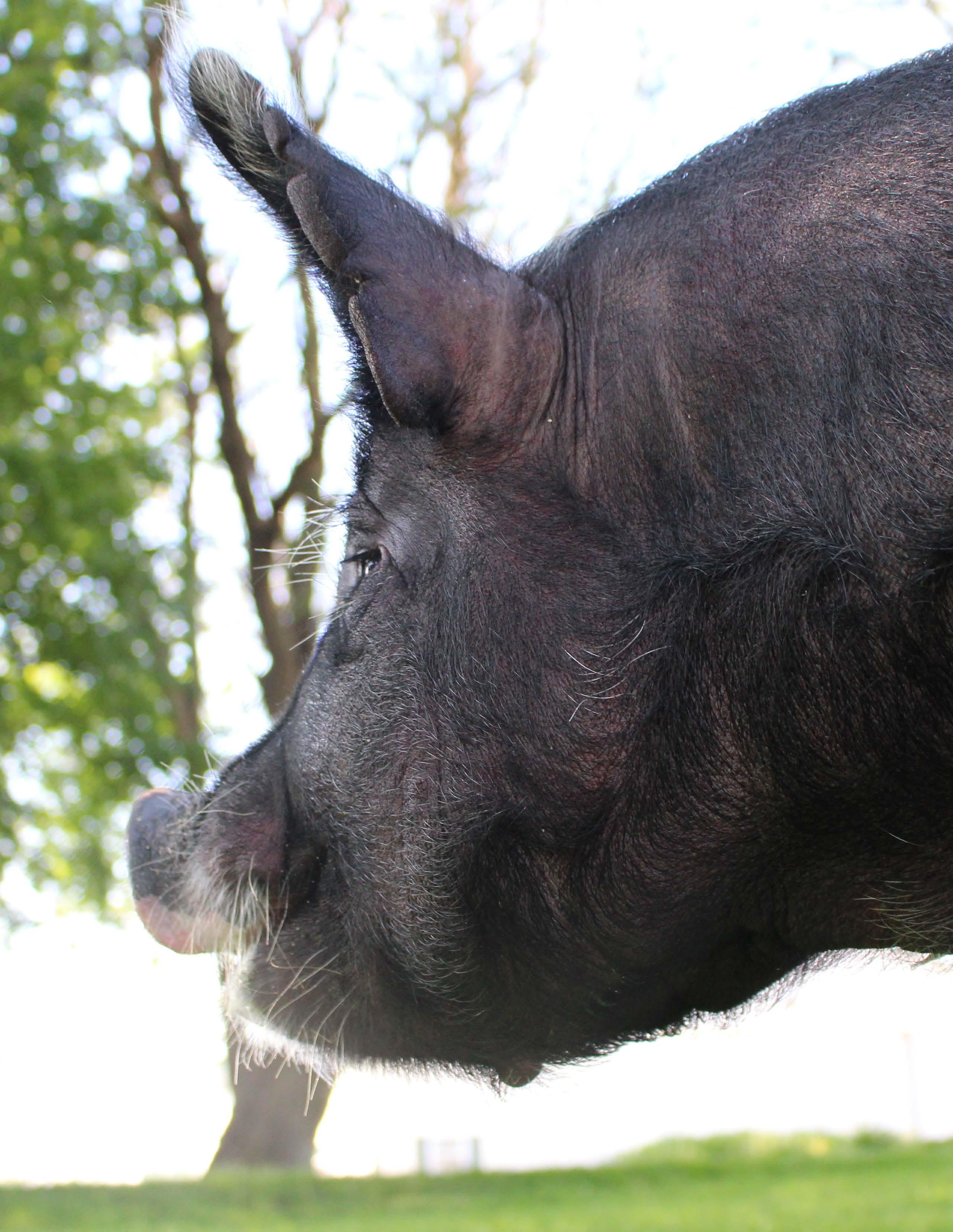
5 minute read
Photography Tips from Torie Egger
words by Mallorie Boggs
It’s that time of the year again. *Typed with a deep sigh*. If you’re like me, the excitement of spring show pig prospects usually accompanies several arguments with my dad about where to stand while picturing pigs and why I couldn’t click faster when the foot was positioned slightly better.
Advertisement
Springtime is an important time in a producer’s bottom line- it’s where the initial cost of semen and feed has an opportunity to return itself with selling pigs. Kids are excited to have new pigs in the barn and adults are excited to see how genetic pairings worked out.
In the past decade or so, online sales have taken off. Hosting a sale online is a great way to share your stock with prospective buyers all over the country. Because a buyer in California can’t take a weekend trip to see a pig they are interested in that is in Iowa, the pictures provided can make or break a sale. Tried and true, pictures say a thousand words.
Whether you’re the one behind the lens or you’re bringing in a professional, here are some tips and tricks from Torie Egger, a talented, livestock photographer:
1. What is the essential camera equipment that you use for picturing livestock? I use the Canon 5d mark 4 camera and I like it because of the quality it gives me, it is the newest canon digital camera and it works well for me in low light.
For lenses I use the Canon 70-200mm 2.8 which I love because I can stay further away from livestock/people to catch candid shots. If you are working with larger animals it helps to get everything in focus and the 70 - 200 is super sharp even in low light. The canon 35mm 1.4 is another lens I love because I can get up close to livestock for sale shots, especially with smaller livestock like pigs it works well for me and when working in smaller spaces you don’t have to be so far away from the animal to get them into the frame. If you have a large picturing space to work with I recommend the Canon 70-200 2.8, if you have a smaller picture set up then I would use the Canon 35mm 1.4.
2. What’s the best time-frame before a sale that producers should picture their pigs? Honestly, this question varies depending on when each producer believes their pigs are at their best stage. It’s important to give yourself time to advertise. If you
Clean, conditioned hair Water, feed or anything to gain the pig’s attention
Feet placed shoulder and hip width apart, square
Pig leaning forward in a comfortable position
photo courtesy of Torie Egger

produce any type of ad for a magazine or you need to send your catalog off to a printing company they have deadlines and you need to meet those deadlines. If it is an online sale people do like to picture them a week before the sale.
3. What are some tips and tricks for getting pigs to stand correctly? I believe it really helps to have something to distract them with. I’ve seen people use a broom or a feed scoop full of feed. These work best because they are usually easier to Photoshop out instead of something big and bulky. These help with getting the heads up and you can use the object to move them forward to fix their stance.
4. What can producers do to get their pigs ready beforehand? Beforehand I believe it is super important if you have pigs that are full of energy to maybe get them out of their pens to run around or walk them a little to get some of their energy out. This will help the picture process go faster because you aren’t waiting for them to stop running around.
Also, I believe it is important to practice using what objects you will be using to distract them with because sometimes a broom or feed scope is not something your pigs will be distracted by and it’s best to find that out ahead of time so you aren’t searching for something on your picture day.
5.How do you get the best angles for pictures? Each pig is pictured differently so that requires finding the best angles that fit that particular pig. I have found that taking the photo from an upper angle shows the
photo courtesy of Torie Egger

top side of the pig as well as the side profile. You can also squat down to get lower angles or If you feel your pig looks best in the front you get a picture from the front of the side profile to show the front and also the side.
6. Picturing livestock can be stressful, what advice do you have for keeping it fun? I think just realizing ahead of time that picturing pigs isn’t the easiest process in the world is important. Picturing pigs is a process that requires patience and not every pig will cooperate perfectly. I think just having a happy attitude and making jokes or having a normal conversation to fill time during the process is very helpful.
Torie would also like to stress the importance of having extra light in your barn. The lighting in barns isn’t always the best which can prevent capturing the true color of your pigs. “I’ve seen people use the portable work lights that come on a stand and I believe those are helpful. Natural lighting is usually the best lighting but if it is cold or rainy then indoors is all you can work. If you are working inside without extra light then your photo quality for print or even online will go down because of all the grain so I believe extra light is very important.” •

Torie Egger torieggerphotography.com








